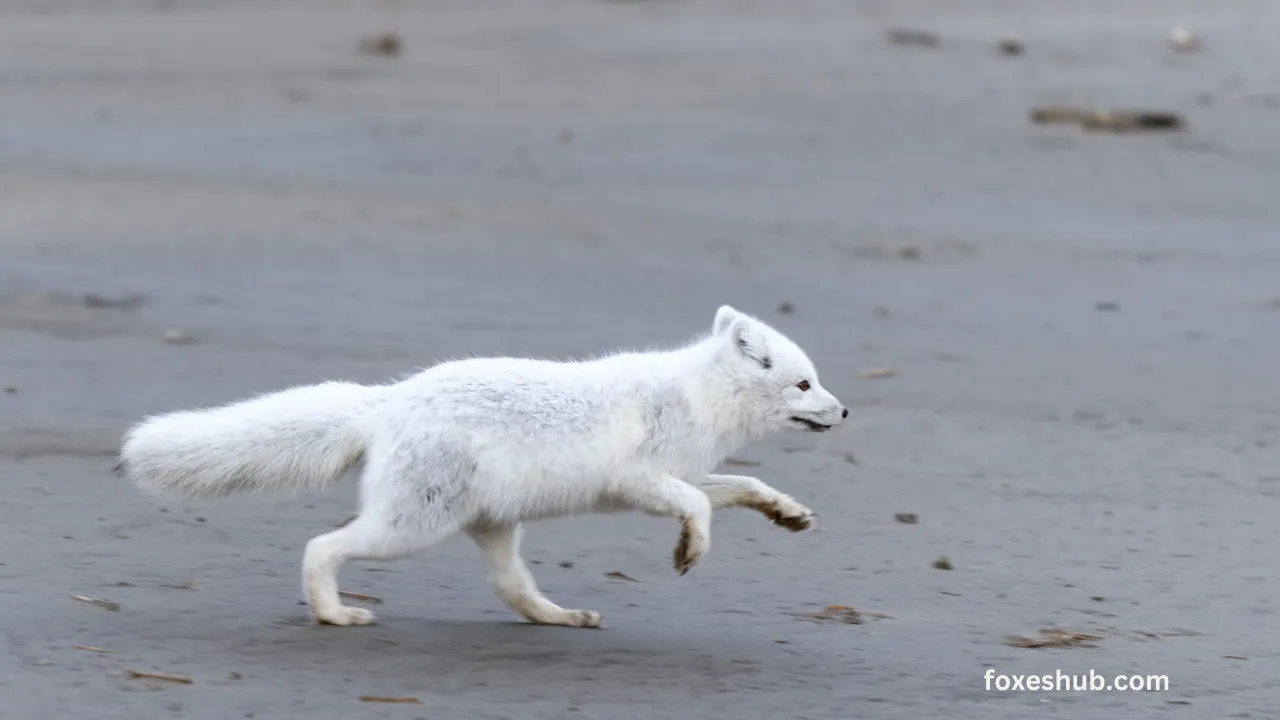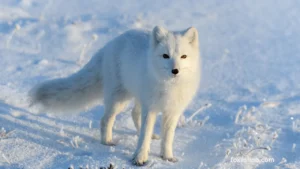Arctic foxes (Vulpes lagopus) are renowned for their remarkable adaptability to the harsh, icy conditions of the Arctic tundra and have long been subjects of fascination due to their diverse diet.
The question of whether Arctic foxes consume fish has been the subject of both scientific study and folklore. This article delves deep into the dietary habits of these fascinating creatures, exploring their feeding behavior, ecological role, and the implications of fish consumption.
Contents
Understanding the Arctic Fox
Arctic foxes are small mammals with dense fur, rounded ears, and a bushy tail, all of which provide insulation against the Arctic climate. They are predominantly found in Arctic and alpine tundra habitats across the Northern Hemisphere, including regions of Canada, Alaska, Greenland, Scandinavia, and Russia.
Dietary Composition of Arctic Foxes
The diet of the Arctic fox is remarkably diverse and varies depending on the season and the availability of prey. In the summer months, their diet primarily consists of lemmings, birds, bird eggs, and carrion. During winter, when lemming populations decline, Arctic foxes adapt their dietary preferences to include small mammals like voles, as well as marine invertebrates, vegetation, and occasionally, fish.

Predation on Fish
While fish may not be a staple in the diet of Arctic foxes, they have been observed to consume fish when the opportunity arises. Their scavenging behavior often leads them to coastal areas where they scavenge on fish carcasses, particularly during the spawning season when fish are abundant along the shores. Additionally, in habitats where fish are more readily available, such as in the vicinity of rivers and the Arctic Ocean, Arctic foxes have been documented preying on fish.
Ecological Significance
The occasional consumption of fish by Arctic foxes may have ecological implications. By consuming fish, Arctic foxes could inadvertently influence the dynamics of fish populations in their respective habitats. Their role as scavengers can also contribute to the nutrient cycling of marine ecosystems, as they redistribute nutrients when scavenging on fish carcasses.
Research and Observations
Scientific studies and field observations have shed light on the foraging behavior of Arctic foxes in a variety of habitats. Researchers have utilized tracking devices and remote cameras to monitor the foraging patterns of Arctic foxes, providing valuable insights into their dietary preferences and feeding behavior, including their interaction with fish as a potential food source.
Cultural Perceptions
In indigenous cultures, the relationship between Arctic foxes and fish extends beyond ecological interactions. Folklore and traditional stories often depict the cunning nature of Arctic foxes as they navigate the Arctic landscape.
Sometimes involving their encounters with fish and other marine life. These cultural narratives add depth to our understanding of the complex relationship between Arctic foxes and their environment.
In conclusion, the dietary habits of Arctic foxes, while primarily focused on small mammals and birds, show a level of flexibility that allows them to exploit a variety of food sources, including fish. While not central to their diet, the occasional consumption of fish by Arctic foxes underscores their adaptability and the dynamic nature of their ecological roles.
Further research and observation will continue to enrich our understanding of the intricate interactions between Arctic foxes and their environment, offering valuable insights into the resilience and resourcefulness of these captivating creatures.
By exploring the nuanced dietary habits of Arctic foxes, we gain a deeper appreciation for their role in the Arctic ecosystem, and the complex web of connections that sustains life in one of the harshest environments on our planet.
FAQs
What is the dietary flexibility of Arctic foxes?
Arctic foxes are remarkably adaptable when it comes to their diet. They are known to consume a wide variety of food including small mammals, birds, carrion, seaweed, and fish, making them highly opportunistic feeders.
Why are Arctic foxes incorporating fish into their diet?
The increasing interaction between Arctic foxes and marine environments has led to the incorporation of fish into their diet. This adaptation enables the foxes to take advantage of the rich marine resources available in certain habitats, further enhancing their survival in these regions.
How do Arctic foxes hunt for fish?
Arctic foxes typically hunt for fish by scavenging along the coastlines, targeting stranded fish, or by catching them from shallow waters. They may also opportunistically consume fish from human fishing activities or prey on fish-eating birds.
What are the nutritional benefits of fish consumption for Arctic foxes?
Incorporating fish into their diet provides Arctic foxes with essential nutrients such as omega-3 fatty acids, proteins, and other vital nutrients that contribute to their overall health and reproductive success.
How does the inclusion of fish impact the Arctic fox’s ecosystem?
The incorporation of fish into the Arctic fox’s diet can have ecological implications, such as potential competition with other predators that rely on fish as a primary food source, and the potential influence on the distribution of nutrients through scavenging and predation activities.






